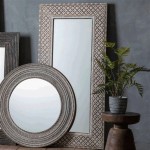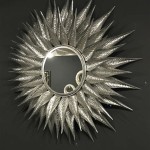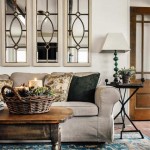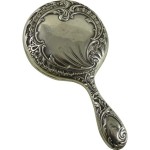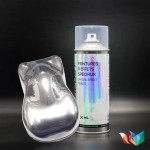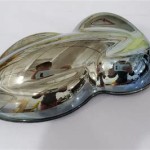How To Distress A Mirror With Chalk Paint
Distressing a mirror with chalk paint offers a simple yet effective method for adding a vintage or antique aesthetic to home décor. This technique allows for customization, offering a range of distressed looks from subtly aged to heavily worn. This article outlines the steps involved in distressing a mirror using chalk paint.
Materials Required:
The following materials are essential for this project:
- Mirror (any size or shape)
- Chalk paint (color of choice)
- Paintbrushes (various sizes for different areas)
- Sandpaper (fine and medium grit)
- Drop cloths or newspapers
- Painter's tape (optional)
- Soft cloths for cleaning
- Clear wax or sealant (optional)
Preparing the Mirror:
Proper preparation ensures a smooth and even paint application. The mirror's surface should be thoroughly cleaned to remove any dust, fingerprints, or residue. A mild glass cleaner and a soft cloth are recommended for this purpose. Allow the mirror to dry completely before proceeding.
Protecting the Glass:
While the objective is to distress the frame, protecting the mirror's reflective surface is crucial. Painter's tape can be applied carefully along the edge where the frame meets the glass. This creates a clean boundary and prevents paint from getting onto the mirrored surface. For intricate frames, precision and patience are key during this step.
Applying the Chalk Paint:
Chalk paint is known for its excellent adhesion and matte finish, making it ideal for this project. Using a brush, apply the chalk paint to the mirror frame. Depending on the desired level of coverage, one or two coats may be sufficient. Allow each coat to dry completely before applying the next. Avoid applying excessively thick coats, as this can lead to cracking during the distressing process.
Distressing Techniques:
Several techniques can achieve a distressed look. One common method involves sanding. Once the paint is dry, use fine-grit sandpaper to gently rub away the paint along the edges and corners of the frame, revealing the underlying material. This creates a naturally worn appearance. For a more pronounced effect, medium-grit sandpaper can be used. Focus on areas that would naturally experience wear over time.
Creating Layers of Distress:
A layered approach can add depth and complexity to the distressed effect. This involves applying a second coat of chalk paint in a slightly different color or shade over the first coat and then sanding it back to reveal portions of the underlying color. This creates a multi-dimensional, aged appearance. Experimentation with different color combinations can yield unique and interesting results.
Wet Distressing Technique:
An alternative to sanding involves using a damp cloth to remove some of the paint while it's still wet. This technique allows for more control over the distressing process and creates a softer, less defined look. It is particularly effective for achieving a subtly aged appearance.
Dry Brushing Technique:
Dry brushing adds subtle highlights and a textured appearance. Dip a dry brush lightly into a contrasting color of chalk paint, removing almost all of the paint onto a paper towel. Then, lightly brush the paint over the raised areas of the frame, creating a subtle highlight and enhancing the distressed effect.
Sealing the Finish (Optional):
While chalk paint has a naturally durable finish, applying a clear wax or sealant can provide extra protection and enhance the distressed look. Apply the wax or sealant with a soft cloth, following the manufacturer's instructions. Allow it to dry completely before handling the mirror.
Clean Up:
Once the paint and sealant are dry, carefully remove the painter’s tape. Clean up any residual paint or debris. Ensure the work area is well-ventilated throughout the process.
Variations and Considerations:
The techniques described above can be adapted and combined to achieve a variety of distressed looks. Experimentation is encouraged to find the desired aesthetic. The type of mirror frame material will also influence the final outcome, as different materials react differently to sanding and painting techniques.

Chalk Paint Mirror Centsational Style

Distress Furniture With Martha Stewart Vintage Decor Paint

12 Techniques To Painting Antique Mirrors Hallstrom Home

Diy Distressed Furniture Chalk Paint Recipe Brantly Wyatt

How To Match A Potterybarn Distressed Finish Mirror Frame Diy Coral Painted Furniture

Chalk Paint Mirror Centsational Style

Chalk Painting An Antique Mirror Frame With Multiple Layers Wet Distressing And Shading

Distressed Farmhouse Style Mirror Frame With Chalk Paint An Easy Home Decor Diy Tutorial In 5 Steps A Flourishing Place

How To Get The Perfect Distressed Finish With Chalk Paint Confessions Of A Serial Do It Yourselfer

12 Techniques To Painting Antique Mirrors Hallstrom Home


